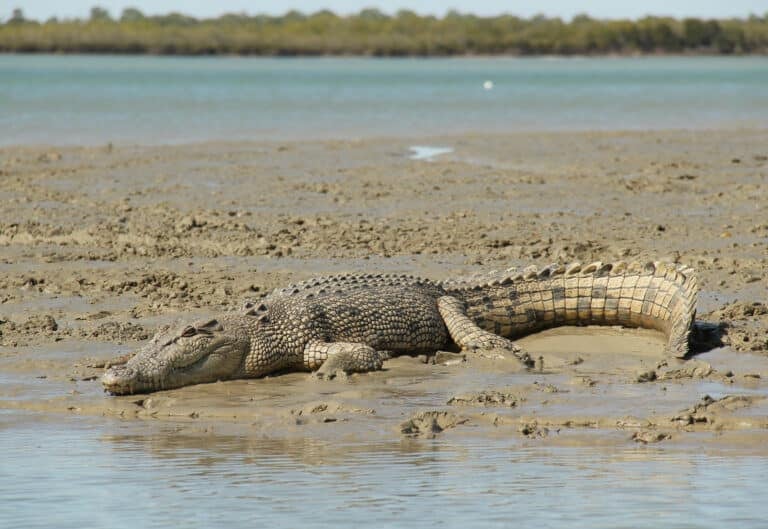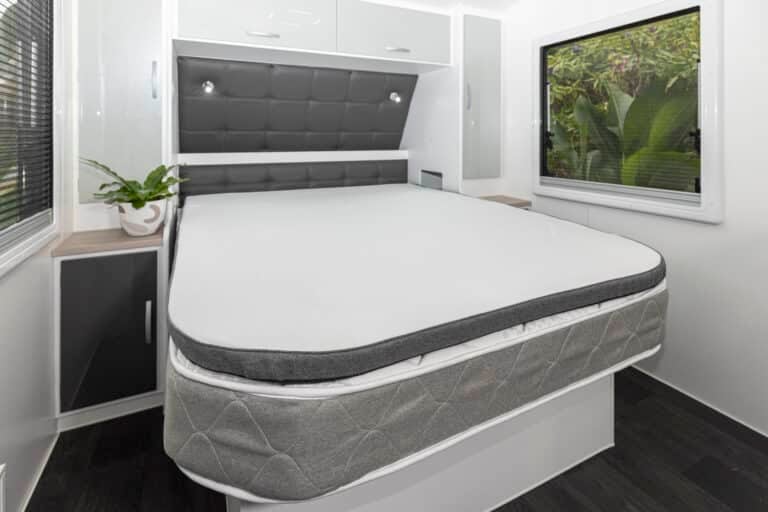
Robert Pepper thoroughly tests out the realities of towing with an EV and also takes a look at EV towing both now and into the future. Make sure to check out the EV vs diesel towing test video further down!
Like it or not, electric vehicles (EVs) are taking over the world. Government after government are declaring that it will be illegal to sell internal combustion engined (ICE) vehicles after dates such as 2035, including the government of the Australian Capital Territory. Carmaker after carmaker is stating that their current vehicle release will be the last ICE vehicle made. And with these new cars comes a set of new words. If you’re unfamiliar with terms such as ICE, PHEV, or BEV, read my short EV jargon explainer.
For those who use cars as city runabouts, the change to electric is no problem at all. In fact, it’s most welcome news. EVs offer much lower running costs and an easier, simpler transport solution than ICE. Interstate trips are getting easier too. In 2019 it took me 17 hours to drive an EV from Melbourne to Adelaide however, in 2022, that same trip was just an hour longer than an ICE vehicle. EVs aren’t yet cost-effective for the average Aussie, but that’s changing quickly.
But if you’re reading this, then you need a vehicle to do more than nip down to the coffee shop, fetch groceries or make an annual trip to see the rellies in the next state. I’m going to assume you’re wanting to tow something, somewhere, and that “something” will be a trailer of at least 1500kg. That “somewhere” could be a destination several hundred if not thousands of kilometres away and often well away from the big cities.

EV towing now
So in this article, I’m going to explore what the advent of EVs means for those of us who tow. My credentials? I am an active 4X4 tourer and caravan tower and I’ve done many tow tests including two with electric vehicles. The most recent of which was carefully measured with two different tow cars and two different trailers and is, I believe, the most comprehensive in the world to date. So I’m bringing practical experience with actual test results, which I’ve also discussed with others who have done similar tests and some automotive engineers. In this article we’re going to look at the EV towing reality now and what might happen in the future.
Right now, no EV on the Australian market can tow very much. The Tesla X is the leader at 2250kg, which isn’t great, and it’s severely hampered by a 100kg maximum towball mass (TBM). I have tested it with a Tvan and we needed to play with the van’s weight distribution to get the TBM within limits. The Hyundai IONIQ5 that I tested has a 1600kg braked mass tow limit, but again a mere 100kg TBM. Those low TBMs will very much limit what trailers you can tow, and that’s even before we get into rear axle loads, GCM etc. Check out my towing weight calculator for more.
The problem with EV towing right now is how far you can pull
However, there are two important EVs now out in the USA market; the Rivian R1T ute and the Ford F-150, both of which can tow in excess of 3500kg. There is no technical reason an EV cannot tow as much as the equivalent ICE. It’s just that we’ve not seen many in the world and none yet in Australia. Similarly, there are no EV sports cars or people movers. So the problem with EV towing isn’t the ability to pull load – it’s how far you can pull.
Right now, the range of an EV is around 400-600 kilometres, as calculated by the WLTP which is equivalent to the ADR81/02 fuel consumption figures we use for ICE vehicles. And just as we do with ICE cars, take at least 10% off that (maybe 20% for real-world use), and that’s before you hook up a trailer.
We don’t speak of range for ICE vehicles, just fuel consumption. However, we can calculate an equivalent to the WLTP range figure for EVs by simply dividing the fuel tank size by consumption. That gives a typical range figure of 700-1200 kilometres for many ICE vehicles, far greater than EVs. The difference becomes even larger when you work on freeway cruising where EVs cannot effectively use their ability to recharge the batteries when slowing (regen), and ICE vehicles hum along at low, fuel-sipping revs. Conversely, the gap widens in favour of the EV when city stop/start traffic is considered as the EV can recover energy and uses next to nothing when stopped.
So what effect does towing have on an EV?
So what effect does towing have on an EV? Your first thought might be the same as ICE. Hook the same trailer to an EV as an ICE, watch the range on both drop by the same percentage. But that’s not the case. My tests, analysis and the work of others show that for any given trailer, the range of an EV drops by a much greater percentage than for an ICE vehicle. Why is this so? Relative aerodynamic efficiency is the short answer; for the longer answer watch the video just a little further down.
The range of the F-150 and Rivian is around 500 kilometres, and we could reasonably expect towing a caravan of 2500kg+ that would drop by 50% to around 250km. However, you need to find a charger before you run out, so a 200km range is about what you may expect. And that’s nowhere near enough. To prove my point, in the video below I show you what we towed, where, how and the data we gathered.
So the range is one EV towing problem. Are there any others? Well, no. Range aside, I can’t think of any way in which an EV is not superior, and significantly so compared to an ICE vehicle for towing, and I run through a few of them in the video.
Problems with EV charging in Australia right now
Now one way to fix range is to simply charge more frequently. It’s slower, but you’ll get there. And here we run into a couple of problems, at least for the moment.
The first is the speed of charging. The average road car EV has a battery of around 50 to 100kWh, usually more like 70. As I found in my 2000km roadtrip in a Hyundai IONIQ5, a DC fast charger will zip a modern EV from around 20% to 80% charge in under half an hour, and then off you zoom. However, the sort of EV that is going to tow a decent sized caravan, two-horse trailer, ski boat or similar will have a battery more like 130kWh…which will take longer to charge. And, you’re going to need to charge to 100%. This will be a problem as charging an EV from 80-100% takes longer than from about 20 to 80%, which is why many owners only go to 80%.
We also need to consider charging infrastructure.
Take a look at this:

Those brown points are EV fast charger locations. The top map is Australia, the bottom is Belgium. The scale is the same.
You can see that in Europe, it’s actually hard to find a place where you’re more than 50km from your nearest fast charger. Not so in Australia…and remember, I centred that map on Australia’s second most populous city.
It is very, very easy to drive out of DC fast charger range when towing with an EV in Australia, and that’s a problem. The idea of slow-charging a 130kWh battery depleted by towing is not appealing.
Also, I’m yet to find an EV charging point that is trailer-friendly.
Try a shopping centre:
So the reality is that the EVs of 2022 aren’t realistic options for Australian long-distance towers because there are very few that can tow, those that can tow have limited capacity, and the charging infrastructure isn’t anywhere near what it needs to be either. Today’s EVs cannot do the job of a diesel 4X4.
EV towing into the future
But that is now, mid-2022. The world is changing rapidly and EVs will surely replace ICE as towcars. Here’s what will happen.
First, we will get vehicles like the Ford F-150 Lightning and Rivian 4X4s which are true heavy-towers, and in the case of the Rivian, a true offroader. This could be within a year or two.
Second, we need, and will get, a step-change in battery performance. I suspect solid-state batteries will be that step. They offer 2-3 times the energy density of today’s batteries. So, imagine an electric Ranger with a range of 1300 kilometres between charges. Halve and a bit that, and you can tow say 500km. That’s more like it. And that may only be four years away.
Third, we need fast chargers everywhere, as they have in Europe. I think that’s coming too; every month there are more chargers coming online. Oh wait, can we generate enough electricity? Well, localised supply issues aside, watch this:
But some time in the next ten to fifteen years it will become a moot point, because all you can buy is an EV, and by that time, EV touring can and will be a reality.
Your choice will be sit and home and reminisce about the good old days, or do what we’ve always done and get out there anyway using what you’ve got. I know where I’ll be. How about you?










Hi Robert,
Interesting article on EV’s. Has any thought been given to having spare batteries available so an EV driver can just exchange batteries rather than plugging the car into a charger and waiting for sufficient charge? The car could be designed with a slide-out/slide-in arrangement for battery exchange.
An EV is a mobile phone on steroids.
Look at how we maintain our phones. Charging every night, battery getting old and slower, extra charging, battery running out just when you are on that important call
Well an EV will be the same, even worse.
” Have I charged my car? How much charge have I got as I need to go out? Can I charge on my trip? Have I the time to wait for the charging? How many people ahead of me at the 2 charging bay?
Really, who wants that daily anguish.
I get angry with my husband if we are off to a job and there is no petrol in the car and the drill batteries are flat.
How can I add having an EV to this mix.
Someone has to own the last ICE car in the world and it will be me.
I have asked this question before to several online mags without a reply, which is what is going to happen to all industries involved with touring,
(caravanning / camping) & all the accessory suppliers & fitters & so on, & then the effect on all outback towns (EG Birdsville) who rely on tourism to survive. And by going all EV does this include Air & Sea travel? Would trust an electric Plane to get you to your destination?
Hi Everyone,
Take into account that everything you tow will have it’s own battery and motors. In some case towing items will effectively ‘push’ the towing vehicle. Jack knifing and thing of history, and most vans will auto pack then selves. More often the towed item will have solar panels providing ongoing charge and will be used to power and backup your home when your not away travelling. And as we move to a circular economy groups of travellers will be able to combine to power the very ‘Venues’ they are staying at. Relieving the power from the local grid and reliance on fossil fuels. Further more it’s worth mentioning that Europeans users have reach 99% recycle levels of lithium and other chemical based batteries giving 2nd and 3rd uses. Once your spent diesel hits the atmosphere its gone, done and dusted. The transition can go quicker, a lot quicker, you just have to believe it. 🙂
Here’s some real food for thought… just where does the e.v thumping brigade think we can all recharge these vehicles…, with many of us now squeezed into apartment living or inner city park on the street residences,.. are we all expected to line up at the rare dual ev charge bays at the odd Bunnings…
I live in a Near new large apartment complex, 150 units, underground parking for most, and not a power point in sight for any of us..!!.. many of my acquaintances live in inner city terraces… where can they possibly charge,
This is a major issue.. one that not a sole seems to wish to tackle…or acknowledge..
Things will change very rapidly. In UK it is becoming the norm to charge your EV overnigh in your caravan park. One club charges nine pounds for this.
the range when towing could be increased if the van had a large battery pack so it could power the car?
I think one of the main things that needs to happen is Caravan/Camper manufacturers need to completely rethink how they are designing them. Since we’ve had all the dual cabs move to be (theoretically) 3.5T towing capable, caravan and camper builders have stopped being innovative around weight. Why on earth does a 15ft caravan have a TARE of almost 2t? It’s madness. I recently towed a friends older 16ft pop-top, the only thing missing was an ensuite and it’s tare was only 1 tonne. Nowadays that same caravan is closer to two tonnes.
The more weight you can save on the caravan the more realistic towing with an EV/PHEV etc becomes so I think the RV industry has to play its part here in giving people lightweight but strong composite material designs. The Europeans are miles ahead of us in this regard. Yes they may not be fully off road but how many people really do that anyway. Pulling into a free camp off the highway for a couple nights doesn’t need an off road van. Many outback roads are now being sealed so you plan your trip accordingly.
How long will an EV run my heater or air conditioning if i am in a traffic jam
I have yet to see real world figures on the real cost of manufacturing , running, powering, recycling of EV,s. Are real figures available for the total co2 emissions from start to end of life ,not those supplied by car makers.
Hi Robert
Some great videos with comprehensive information, thanks!
Answers the question “how much will towing affect my range?” with the simple answer “about 50%”!